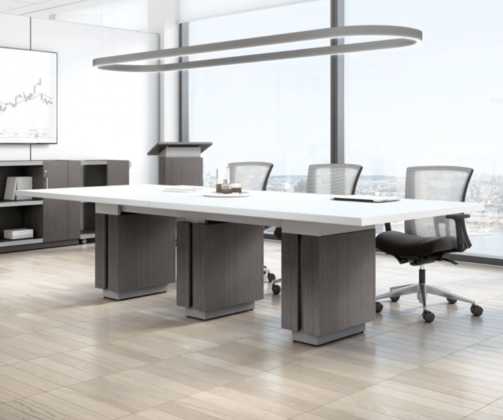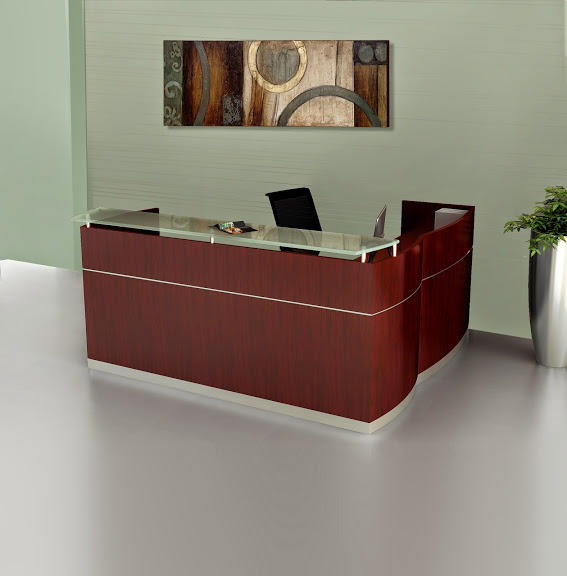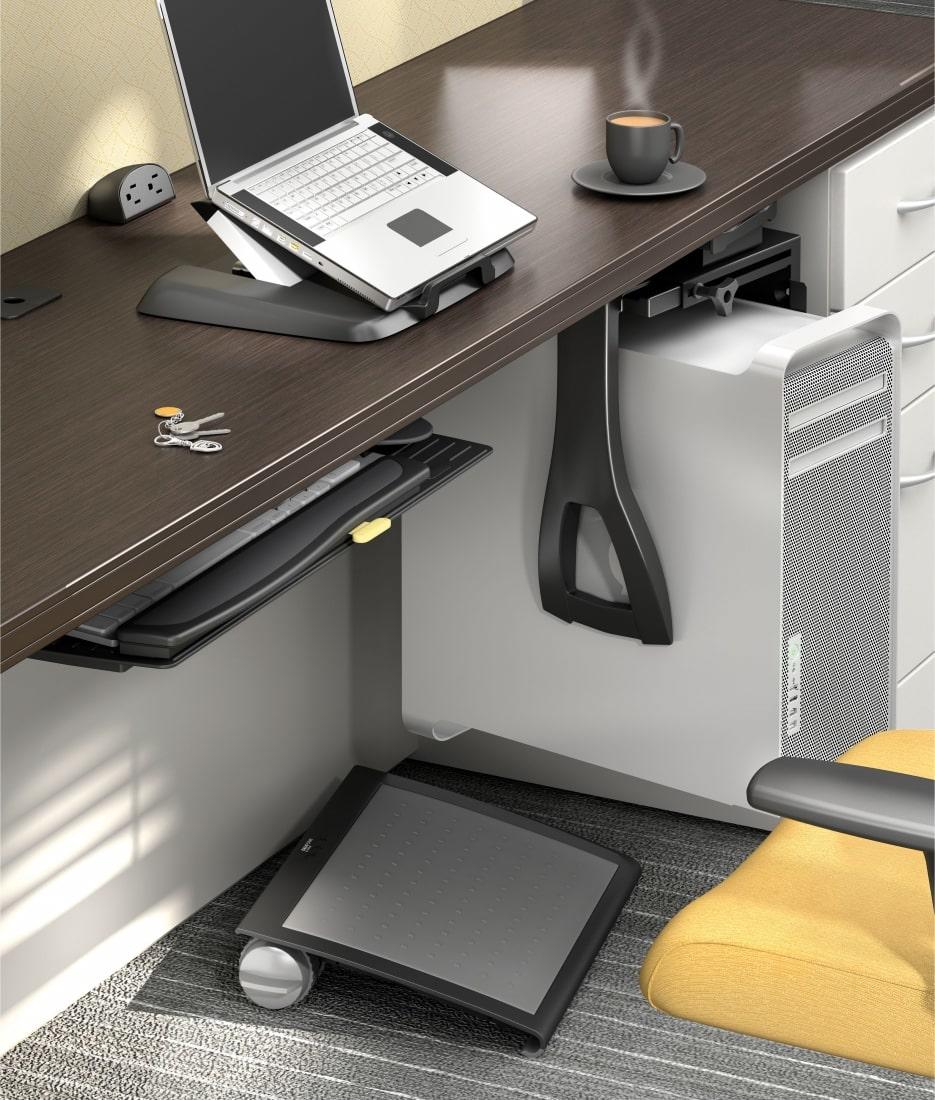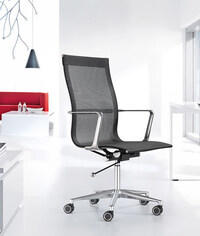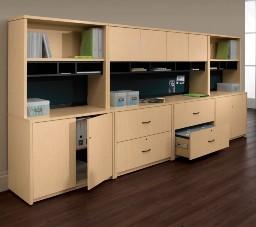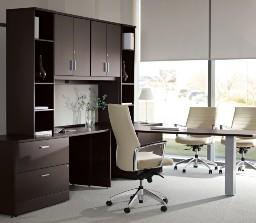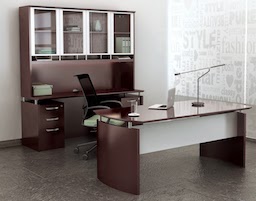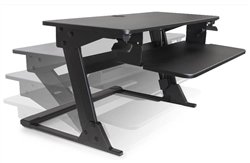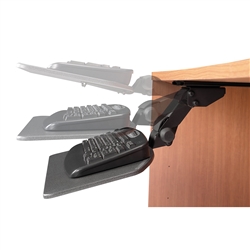What's Keeping You From Comfort?
Posted by OfficeAnything on Aug 15th 2018
We all want to be comfortable and productive in the workplace. Unfortunately, office ailments like physical strain and fatigue can hold us back. If you're like us, your constantly looking for ways to solve these problems and operate at peak performance levels. Today on the blog we'll cover tips, tricks, and product suggestions specifically designed to help battle comfort related issues.
First things first, you've got to avoid extended sits at your desk. If you're not taking a 5 to 10 minute break once every hour, you need to be. You simply can't work at your desk for hours on end expecting productivity levels and comfort to remain high. Stand up, stretch out, walk around, and hydrate. You'll return to your work refreshed and ready to tackle tasks in comfort.
Pro Tip: If you don't have the time to take a short break once every hour, ergonomic products are available to help. A sit to stand desktop attachment will help you stay active and reduce fatigue by eliminating the need for extended sits. Popular options like the Volante from Systematix and S2S from ESI Ergonomic Solutions are a must consider.
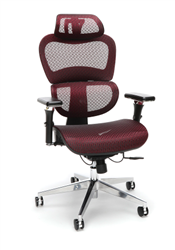 When you are sitting, it's important to adjust your chair properly. You can't just sit down and expect your chair to do all the work. If you've invested money in a high performance ergonomic chair, get to know it. Read the owner's manual, and if available, watch demo videos online.
When you are sitting, it's important to adjust your chair properly. You can't just sit down and expect your chair to do all the work. If you've invested money in a high performance ergonomic chair, get to know it. Read the owner's manual, and if available, watch demo videos online.
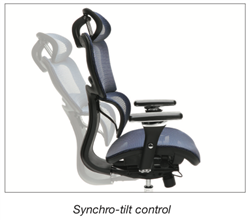 Pro Tip: Back angle is key! Set your chair back to a position that allows you to maintain contact at all times when sitting. If your chair has a tilter feature, you can adjust the rate of recline and resistance with the tension knob typically located at the front of your seat. Do your best to avoid hunching over your keyboard tray to type. Each time you lean away from your chair you're missing out on essential support.
Pro Tip: Back angle is key! Set your chair back to a position that allows you to maintain contact at all times when sitting. If your chair has a tilter feature, you can adjust the rate of recline and resistance with the tension knob typically located at the front of your seat. Do your best to avoid hunching over your keyboard tray to type. Each time you lean away from your chair you're missing out on essential support.
There's also a lot to be said for proper foot placement. If you're currently using the base of your office chair as a foot rest, blood flow is restricted. This can lead to fatigue and lower body strain. It's important to keep your feet placed flat on the ground and facing forward. To help with this, raise your chair to the proper height. If your chair is too low or high, you'll likely be perching on the base. At the correct height your feet will be able to rest flat and comfortable on the floor with your thighs laying flat across the chair seat.
Pro Tip: Create a chart or list of posture tips and post them within eyesight of your computer monitors. This will keep them fresh in your mind. Recent studies have shown that this simple and free practice yields positive results.
Are you eating a healthy breakfast and lunch? It can lead to a more comfortable work day. Save that big stack of flap jacks and bacon for the weekend. During the work week, eat vitamin rich fruits and veggies to provide you with energy. A healthy diet will help you fight back against those mid day lulls that cause posture habits to suffer and productivity levels to drop.
It's also very important to type at healthy angles. If your keyboard tray is currently sitting atop your office desk, it's time to invest in an articulating mount. Attaching an ergonomic keyboard mount underneath your desk surface will instantly provide you with more operating space. More importantly, it will make it easy for your to type at healthy angles that reduce the risk of office epidemics like Carpal Tunnel Syndrome.
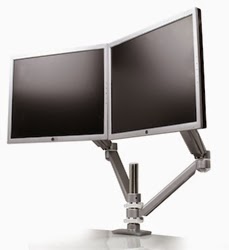 Last but not least, you need to create an effective monitor setup. These days most workers have made the switch to a dual screen system to cut down on the time spent flipping back and forth between tabs. With a dual monitor setup you can improve productivity levels and compute more comfortable. Monitor arm attachments create usable work surface space and provide users with the ability to raise screens up to eye level where they belong.
Last but not least, you need to create an effective monitor setup. These days most workers have made the switch to a dual screen system to cut down on the time spent flipping back and forth between tabs. With a dual monitor setup you can improve productivity levels and compute more comfortable. Monitor arm attachments create usable work surface space and provide users with the ability to raise screens up to eye level where they belong.
Pro Tip: If your computer screens are set too low on your desk, you'll be looking down when typing. This causes a lot of neck strain. Raise your screens up to eye level and lean back on your office chair when computing. This will help fight visual strain and fatigue that causes personal comfort to decline.
First things first, you've got to avoid extended sits at your desk. If you're not taking a 5 to 10 minute break once every hour, you need to be. You simply can't work at your desk for hours on end expecting productivity levels and comfort to remain high. Stand up, stretch out, walk around, and hydrate. You'll return to your work refreshed and ready to tackle tasks in comfort.
Pro Tip: If you don't have the time to take a short break once every hour, ergonomic products are available to help. A sit to stand desktop attachment will help you stay active and reduce fatigue by eliminating the need for extended sits. Popular options like the Volante from Systematix and S2S from ESI Ergonomic Solutions are a must consider.
 When you are sitting, it's important to adjust your chair properly. You can't just sit down and expect your chair to do all the work. If you've invested money in a high performance ergonomic chair, get to know it. Read the owner's manual, and if available, watch demo videos online.
When you are sitting, it's important to adjust your chair properly. You can't just sit down and expect your chair to do all the work. If you've invested money in a high performance ergonomic chair, get to know it. Read the owner's manual, and if available, watch demo videos online. Pro Tip: Back angle is key! Set your chair back to a position that allows you to maintain contact at all times when sitting. If your chair has a tilter feature, you can adjust the rate of recline and resistance with the tension knob typically located at the front of your seat. Do your best to avoid hunching over your keyboard tray to type. Each time you lean away from your chair you're missing out on essential support.
Pro Tip: Back angle is key! Set your chair back to a position that allows you to maintain contact at all times when sitting. If your chair has a tilter feature, you can adjust the rate of recline and resistance with the tension knob typically located at the front of your seat. Do your best to avoid hunching over your keyboard tray to type. Each time you lean away from your chair you're missing out on essential support.There's also a lot to be said for proper foot placement. If you're currently using the base of your office chair as a foot rest, blood flow is restricted. This can lead to fatigue and lower body strain. It's important to keep your feet placed flat on the ground and facing forward. To help with this, raise your chair to the proper height. If your chair is too low or high, you'll likely be perching on the base. At the correct height your feet will be able to rest flat and comfortable on the floor with your thighs laying flat across the chair seat.
Pro Tip: Create a chart or list of posture tips and post them within eyesight of your computer monitors. This will keep them fresh in your mind. Recent studies have shown that this simple and free practice yields positive results.
Are you eating a healthy breakfast and lunch? It can lead to a more comfortable work day. Save that big stack of flap jacks and bacon for the weekend. During the work week, eat vitamin rich fruits and veggies to provide you with energy. A healthy diet will help you fight back against those mid day lulls that cause posture habits to suffer and productivity levels to drop.
It's also very important to type at healthy angles. If your keyboard tray is currently sitting atop your office desk, it's time to invest in an articulating mount. Attaching an ergonomic keyboard mount underneath your desk surface will instantly provide you with more operating space. More importantly, it will make it easy for your to type at healthy angles that reduce the risk of office epidemics like Carpal Tunnel Syndrome.
 Last but not least, you need to create an effective monitor setup. These days most workers have made the switch to a dual screen system to cut down on the time spent flipping back and forth between tabs. With a dual monitor setup you can improve productivity levels and compute more comfortable. Monitor arm attachments create usable work surface space and provide users with the ability to raise screens up to eye level where they belong.
Last but not least, you need to create an effective monitor setup. These days most workers have made the switch to a dual screen system to cut down on the time spent flipping back and forth between tabs. With a dual monitor setup you can improve productivity levels and compute more comfortable. Monitor arm attachments create usable work surface space and provide users with the ability to raise screens up to eye level where they belong.Pro Tip: If your computer screens are set too low on your desk, you'll be looking down when typing. This causes a lot of neck strain. Raise your screens up to eye level and lean back on your office chair when computing. This will help fight visual strain and fatigue that causes personal comfort to decline.




